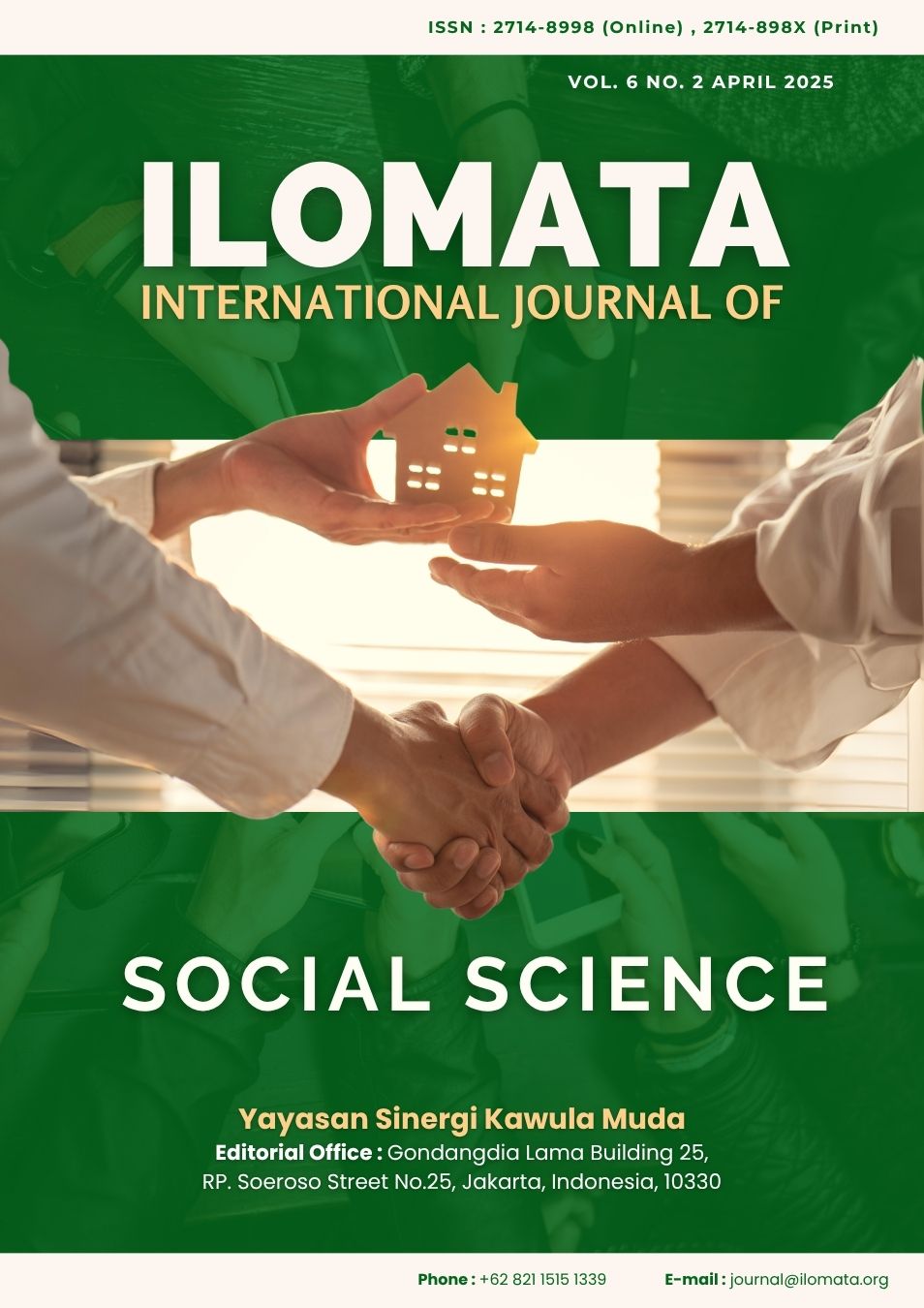Main Article Content
Abstract
This study examines the challenges encountered during bureaucratic reform in developing countries, focusing on the complexities of implementing effective administrative changes. Employing a qualitative research method that includes a literature review and case study approach, the research highlights the various obstacles governments face, such as resistance to change, lack of institutional capacity, corruption, and political interference. The study identifies common trends and key factors hindering reform efforts by analyzing multiple case studies from different developing nations. A significant finding is the role of entrenched political elites, who often resist changes that may diminish their influence or control over resources. Additionally, weak governance structures and insufficient training programs for civil servants contribute to the slow pace of reform. The study also discusses the importance of fostering a culture of transparency and accountability within public institutions and the need for comprehensive strategies that address both the technical and human aspects of reform. This research contributes to the growing body of literature on public administration reform by providing insights into the multifaceted challenges that developing countries face. It offers recommendations for policymakers to create more adaptable and resilient bureaucratic systems that are better equipped to meet the demands of modern governance.
Keywords
Article Details

This work is licensed under a Creative Commons Attribution 4.0 International License.
References
- Abdalla, S. (2012). An e-government adoption framework for developing countries: A case study from Sudan.
- Ballas, P., & Balla, V.-M. (2024). Enhancing Social and Economic Resilience for a Changing World: The Strategic Role of Continuous Training and Capacity Building in Contemporary Tax and Customs Administrations. In The Role of the Public Sector in Building Social and Economic Resilience: A Public Finance Approach (pp. 157–179). Springer.
- Brinkerhoff, D. W., & Brinkerhoff, J. M. (2015). Public sector management reform in developing countries: Perspectives beyond NPM orthodoxy. Public Administration and Development, 35(4), 222–237.
- Butt, J. S. (2023). The Role of Bureaucracy in Europe for Promoting Democracy, Equality, Good Governance and Social Justice. Acta Universitatis Danubius. Administratio, 15(1), 7–20.
- Dhaliwal, I., & Hanna, R. (2017). The devil is in the details: The successes and limitations of bureaucratic reform in India. Journal of Development Economics, 124, 1–21.
- Faguet, J.-P. (2014). Decentralization and governance. World Development, 53, 2–13.
- Funck, E. K., & Karlsson, T. S. (2020). Twenty‐five years of studying new public management in public administration: Accomplishments and limitations. Financial Accountability & Management, 36(4), 347–375.
- Gabriel, A. G. (2023). Bureaucratic red tape in the Philippines. In Global Encyclopedia of Public Administration, Public Policy, and Governance (pp. 1304–1311). Springer.
- Gruber, J. (2023). Controlling bureaucracies: Dilemmas in democratic governance. Univ of California Press.
- Hidayat, F. (2023). THE IMPACT OF BUREAUCRATIC REFORM ON INDONESIAN GOVERNANCE: A PERSPECTIVE REVIEW OF ACADEMIC LITERATURE. Jurnal Politik Pemerintahan Dharma Praja, 16(2), 169–196.
- Hummel, R. P. (2014). The bureaucratic experience: The post-modern challenge: The post-modern challenge. Routledge.
- Hwang, K., & Choi, M. (2017). Effects of innovation-supportive culture and organizational citizenship behavior on e-government information system security stemming from mimetic isomorphism. Government Information Quarterly, 34(2), 183–198.
- Jude, C., & Levieuge, G. (2017). Growth effect of foreign direct investment in developing economies: The role of institutional quality. The World Economy, 40(4), 715–742.
- Keohane, R. O. (2017). International institutions: Two approaches. In International organization (pp. 171–188). Routledge.
- Kettl, D. F. (2015). The transformation of governance: Public administration for the twenty-first century. Jhu Press.
- Khoury, T. A., & Prasad, A. (2016). Entrepreneurship amid concurrent institutional constraints in less developed countries. Business & Society, 55(7), 934–969.
- La Palombara, J. (2015). Bureaucracy and Political Development.(SPD-2), Volume 2. Princeton University Press.
- Lovan, W. R., Murray, M., & Shaffer, R. (2017). Participatory governance: planning, conflict mediation and public decision-making in civil society. Routledge.
- Marshall, R. E., & Farahbakhsh, K. (2013). Systems approaches to integrated solid waste management in developing countries. Waste Management, 33(4), 988–1003.
- McDonnell, E. M. (2017). Patchwork leviathan: How pockets of bureaucratic governance flourish within institutionally diverse developing states. American Sociological Review, 82(3), 476–510.
- McDonough, A., & Rodríguez, D. C. (2020). How donors support civil society as government accountability advocates: a review of strategies and implications for transition of donor funding in global health. Globalization and Health, 16, 1–18.
- Nelson, J. M. (2017). Access to power: Politics and the urban poor in developing nations (Vol. 5205). Princeton University Press.
- Patashnik, E. M., & Weaver, R. K. (2021). Policy analysis and political sustainability. Policy Studies Journal, 49(4), 1110–1134.
- Polites, G. L., & Karahanna, E. (2012). Shackled to the status quo: The inhibiting effects of incumbent system habit, switching costs, and inertia on new system acceptance. MIS Quarterly, 21–42.
- Rose-Ackerman, S., & Truex, R. (2012). Corruption and policy reform. Yale Law & Economics Research Paper, 444.
- Smoke, P. (2015). Rethinking decentralization: Assessing challenges to a widespread public sector reform. Public Administration and Development, 35(2), 97–112.
- Speer, J. (2012). Participatory governance reform: A good strategy for increasing government responsiveness and improving public services? World Development, 40(12), 2379–2398.
- Van Wart, M. (2014). Dynamics of leadership in public service: Theory and practice. Routledge.
- Vian, T. (2008). Review of corruption in the health sector: theory, methods and interventions. Health Policy and Planning, 23(2), 83–94.
- Weare, C., Lichterman, P., & Esparza, N. (2014). Collaboration and culture: Organizational culture and the dynamics of collaborative policy networks. Policy Studies Journal, 42(4), 590–619.
- Xu, C. (2011). The fundamental institutions of China’s reforms and development. Journal of Economic Literature, 49(4), 1076–1151.

